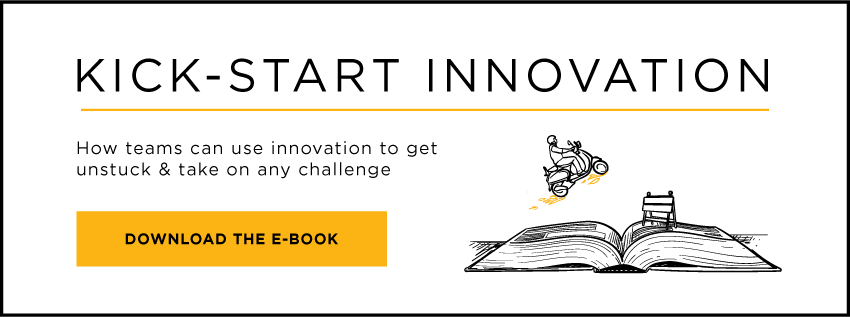"We need to create a culture of innovation."
So begins a familiar conversation in boardrooms across the world. The reasons for wanting innovation (game-changing products, services and processes) are well understood. But why "culture"?
Here’s how Tony Bond, EVP and Chief Innovation Officer at Great Place to Work®, answers that question in his work:
Why focus on culture? Workplace culture, intentionally or unintentionally, affects how your employees and your customers experience the business and the brand.
Culture is defined by the actions and behaviors that are part of the organizational DNA. In essence, it represents the deepest state of capability.
When you have a culture of innovation, it means that a set of instincts and reflexes informs how the organization orients itself to problems and opportunities.
Just like cultures of commitment and accountability, a culture of innovation produces a self-perpetuating and sustainable competitive advantage.
So it makes sense that we hear the boardroom rallying cries calling for a culture of innovation. But what comes next?
For many, the process of actually creating the culture of innovation comes down to a best-practice exercise: Let’s dissect what it is those companies we admire are doing, and then we’ll do that, too. Google gives their engineers “20% time.” So should we.
Intuit® installed a kitchen table in its innovation center since that’s where the idea for the company was initially dreamed up. We ought to do something like that, too.
But the problem is that you can’t just stick someone else’s culture into your own. Transplanting the practices of other innovators, without cultivating the essential mindsets and organizational supports to nurture these practices, will almost always result in organ rejection. As Jason Fried, co-founder and president of 37signals, said, even though copying what’s already been done successfully seems like a smart way to go, it rarely works. Using the example of interface design, he explained:
Copying skips understanding. Understanding is how you grow. You have to understand why something works or why something is how it is. When you copy it, you miss that. You just repurpose the last layer instead of understanding all the layers underneath...This is why future iterations of a copied interface begin to break down quickly. The copiers don’t understand where to take it next because they don’t understand the original intention. They don’t know the original moves so they don’t understand the next move.
A better approach is to start by recognizing the implications of creating an innovation culture: it means changing the culture, and that requires people to adopt new behaviors. After all, at its simplest definition, organizational culture is "how people do things around here." Creating a culture of innovation inherently means changing how people do things around here.
Instead of attaching someone else’s innovation processes to your unique organization, it’s much more effective to build the foundation for new ways to grow from within. To do that, you need to (a) cultivate new mindsets and (b) create the conditions that support new behaviors.
A. New ways need new mindsets
From the outside looking in, culture is observed as “ways,” manifesting as behaviors and practices. These behaviors and practices are the result of people's mindsets and beliefs. How people see the world is at the core of how they behave and act.
But new mindsets, and therefore, new ways, can be developed.
In her book Mindset: The New Psychology Of Success, Carol Dweck says, “People may start with different temperaments and different aptitudes, but it is clear that experience, training and personal effort take them the rest of the way.” Design thinking develops mindsets and provides methods that are powerful seeds to build a culture of innovation. These are human-centered mindsets that are grounded in optimism, collaboration and experimentation. By integrating the mindsets of human-centered design and combining them with your existing mindsets and stories, you develop a new culture that is unique and specifically tuned for your business.
B. New ways need new conditions
Much like planting a tree in a desert, introducing new innovation mindsets in an environment that is hostile to growth is a futile effort. As a result, it's essential to create the right conditions—including the right systems, structures and people—to encourage and support the new behaviors.
The most effective environments are those that succeed in combining traditional extrinsic forms of motivation, like incentives, rewards and recognition, with powerful intrinsic levers, like purpose, autonomy and mastery.
New mindsets and new conditions help to create a culture of innovation that's not imported from elsewhere, but rather grows from the inside out. The result is your way to innovate, a process that’s perfectly suited for your unique organization and circumstances and ideally situated to deliver the results you’re looking for. It might even end up being an approach others discover and decide they should emulate. (Of course, their mileage may vary!)
Once you have the mindsets and conditions in place, the next question you’ll need to address is how to make your culture of innovation take root and flourish. Part 2 in this series tackles the all-important issue of “how to.”
Learn how to enable innovation skill-building at scale or download our free ebook Kickstart Innovation: A Guide for Organizations.
